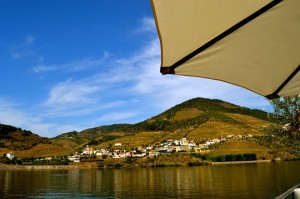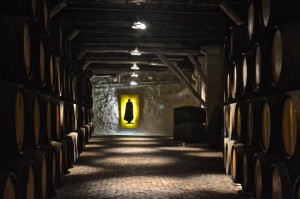What is the proposal for establishing the Ancient Lakes of Columbia Valley AVA?
On May 8, 2012, the Alcohol and Tobacco Tax and Trade Bureau (“TTB”) announced a proposal for establishing an American Viticultural Area (“AVA”) for the Ancient Lakes of Columbia Valley in Douglas, Grant, and Kittitas Counties in central Washington. The notice states that TTB:
proposes to establish the 162,762-acre “Ancient Lakes of Columbia Valley” viticultural area in Douglas, Grant, and Kittitas Counties in central Washington. The proposed viticultural area lies within the larger Columbia Valley viticultural area [27 CFR 9.74]. TTB designates viticultural areas to allow vintners to better describe the origin of their wines and to allow consumers to better identify wines they may purchase. (27 CFR Part 9 Notice No. 128 Proposed Establishment of the Ancient Lakes of Columbia Valley Viticultural Area.)
The proposal indicates that the Ancient Lakes of Columbia Valley is distinguishable from the Columbia Valley AVA because of the topography, soils, climate, and geography of the propose viticultural area. (See TTB Newsletter for May 11, 2012.) Accordingly, the proposed AVA is located within a “distinctive landform” that is known locally as the Quincy Basin, which has “elevations lower than the surrounding area and slopes gently to the east.” (Federal Registrer: Proposed Establishment of the Ancient Lakes of Columbia Valley Viticultural Area.) It is noted that the floor of the basin is flatter than the surrounding region. (See id.) Additionally, according to the United States Department of Agriculture-Natural Resources Conservation Service, the proposed AVA has 65 soil types and the petition itself compares the soil of the proposed AVA with the soil of the current Columbia Valley AVA. (See id.) “The tables show significant contrasts in soils within and outside of the proposed Ancient Lakes of Columbia Valley viticultural area.” (Id.)

According to the Federal Register, Joan R. Davenport, a professor of soil sciences at Washington State University, and Cameron Fries of White Heron Cellars, sent TTB a petition on behalf of vintners and grape growers in the Ancient Lakes region of central Washington promoting the establishment the Ancient Lakes of Columbia Valley viticultural area. (See Federal Registrer: Proposed Establishment of the Ancient Lakes of Columbia Valley Viticultural Area.) In addition,
[t]he proposed viticultural area contains 162,762 acres, 1,399 acres of which are dedicated to commercially-producing vineyards. The petition states that there are six wineries and six commercially-producing vineyards located within the proposed viticultural area. The petition also includes a map showing that the vineyards and wineries are dispersed throughout the proposed viticultural area. According to the petition, the distinguishing features of the proposed viticultural area include its topography, soils, climate, and geology. Unless otherwise noted, all information and data contained in the below sections concerning the name, boundary, and distinguishing features of the proposed viticultural area are from the petition for the proposed Ancient Lakes of Columbia Valley viticultural area and its supporting exhibits. (Id.)
What are the main differences between the Columbia Valley AVA and the proposed Ancient Lakes of Columbia Valley AVA?
The Federal Register notes that petition’s information indicates that the proposed Ancient Lakes of Columbia Valley viticultural area “generally has a climate that fits within the climate range of the larger Columbia Valley viticultural area as described in T.D. ATF-190, with low annual precipitation, a growing season of 180 days, and 2,570 GDD units.” (Id.) The TTB, however, highlights that while similarities do exist between Columbia Valley and the Ancient Lakes area, such similarities juxtapose with the more disparate topography, soils, and climate of what is currently an expansive area. (Id.) While the Columbia Valley viticultural area and the proposed Ancient Lakes of Columbia Valley viticultural area are both basins, it is notable that Columbia Valley is “is marked by three major rivers, whereas the water features of the proposed Ancient Lakes of Columbia Valley viticultural area include many small lakes and two manmade irrigation canals” and the only major river in the proposed Ancient Lakes area is the Columbia River. (Id.) Additionally, it is considerable the petition indicates that, while certain soil contents are found within the proposed viticultural area, such soils are not found in the same frequency as those in the current, established viticultural area. (Id.)
What is the notice and comment process for this proposal?
The TTB welcomes comments on this proposal until July 9, 2012. For more information about how to submit a comment, see 27 CFR Part 9 Notice No. 128 Proposed Establishment of the Ancient Lakes of Columbia Valley Viticultural Area and to view comments associated with this rulemaking, see Docket Folder Summary: Proposed Establishment of the Ancient Lakes of Columbia Valley Viticultural Area. As of this writing, there is currently one comment with respect to this proposal.
What is an American Viticultural Area (“AVA”)?

Section 4.25(e)(1)(i) of the Code of Federal Regulations (27 CFR 4.25(e)(1)(i)) defines a viticultural area for American wine as “[a] delimited grape-growing region having distinguishing features as described in part 9 of this chapter and a name and a delineated boundary as established in part 9 of this chapter.” These classifications permit vintners and consumers to “attribute a given quality, reputation, or other characteristic of a wine made from grapes grown in an area to its geographic origin.” (Federal Registrer: Proposed Establishment of the Ancient Lakes of Columbia Valley Viticultural Area.) Structuring, classifying, and establishing viticultural areas within the United States allows winegrowers to more accurately describe the origin of their wine products and to additionally aid consumers in the identification of wines. It is widely believed, and argued by many, that the area in which wine grapes are grown can greatly characterize the wine in terms of style, taste, and overall product reputation.
Photographs are property of Lindsey A. Zahn.
For more information on wine or alcohol law, TTB, AVAs, or federal law, please contact Lindsey Zahn.
DISCLAIMER: This blog post is for general information purposes only, is not intended to constitute legal advice, and no attorney-client relationship results. Please consult your own attorney for legal advice.